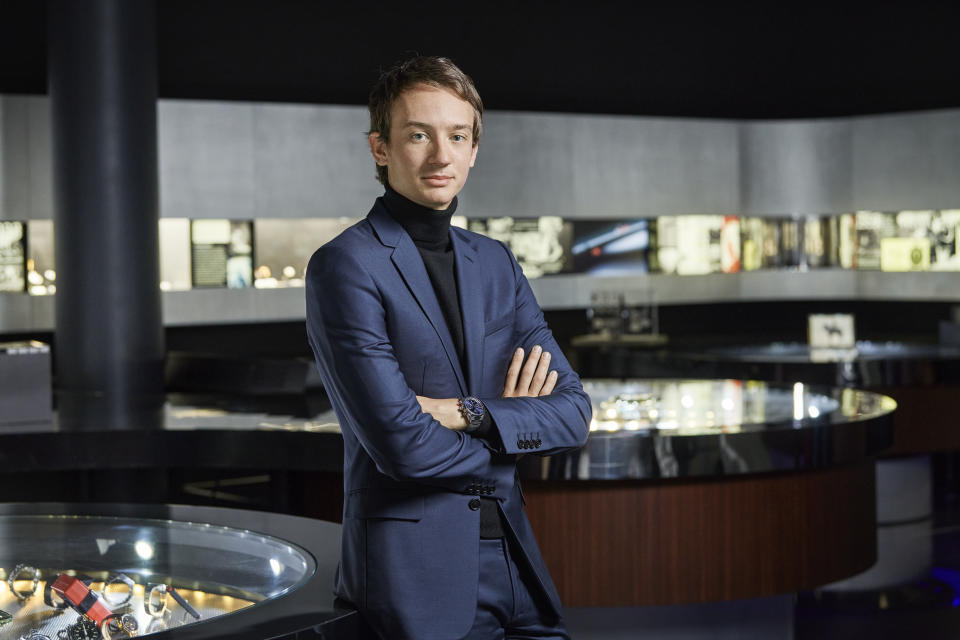Tag Heuer Doubles Down on Innovation, Precision and Performance

PARIS — Deeper, longer and better is how Tag Heuer plans to keep time, chief executive officer Frédéric Arnault revealed ahead of the Watches and Wonders fair starting Wednesday.
Among the innovations presented will be the Aquaracer Professional 1000 Superdiver, an all-titanium model geared for professional divers that can go down to 1,000 meters, and the Aquaracer Professional 200 Solargraph, the brand’s first solar-powered watch.
More from WWD
The former will contain a COSC-certified TH03-00 movement produced by Kenissi Manufacture and is ISO-certified for saturation diving, where divers reach the greatest depths. The latter can tap the energy of the sun or even artificial light to charge its battery, with two minutes giving power for a day and a full charge, achieved under 20 hours, lasting six months or even three-and-a-half years if using the built-in low power mode.
The executive also confirmed plans to unveil a timepiece that makes use of “a revolutionary material [for watchmaking] and [represents] a new way of expressing diamonds on a watch” in a keynote presentation at the fair Wednesday at 2:30 p.m. CET.
The six pieces that will take pride of place in Geneva are the culmination of “years of R&D to achieve strong innovation, quality in terms of movements with increased performance, increased precision and characteristics like battery life or anti-magnetism in mechanical movements — all of which amounts to a strong message of durability that allows us to now extend warranty on some models to five years,” Arnault told WWD on a preview call.

Gian Marco Castelberg/Courtesy of Tag Heuer
Other new models make nods toward the watchmaker’s heritage, like the orange-toned Orange Diver, recalling a 1970s model dubbed “Orange Boy,” or the Tag Heuer Monaco Gulf special edition, which is a nod to the connection with motorsport and endurance driver Jo Siffert, a friend of Jack Heuer, and Steve McQueen, who wore the Monaco on screen in the movie depicting the Swiss driver’s exploits. A further chapter in the ongoing collaboration with Porsche will also be premiered.
Innovation is important now, but it is also what will keep mechanical watches relevant in the long run. “Watches are no longer functional objects but items of know-how, craftsmanship and history. And that was even further accentuated with connected watches. Now you have something else that takes the space [on the wrist] where the watch was, so desirability remains key,” the CEO said.
Although Swiss watch export figures have continued to paint the portrait of a healthy industry, Arnault cautioned against being too complacent. According to him, the main challenges watchmakers are facing is how to remain desirable for younger generations and continue to remain a strong industry going forward.
“Even if we are a strong industry today and perspectives are positive, you have to constantly question yourself,” he said, noting this came in a decade-long context connected with the rise of smart devices that saw users check the time on phone screens rather than on their watches.
Arnault expects watches, especially high-end models, to continue to be seen as an investment. “That aspect is taking an ever-increasing importance. Even for passionate collectors, knowing that a timepiece bought today could be appreciating in value tomorrow really helps with purchasing decisions,” said the executive, himself a longtime watch enthusiast.
Sign up for WWD's Newsletter. For the latest news, follow us on Twitter, Facebook, and Instagram.